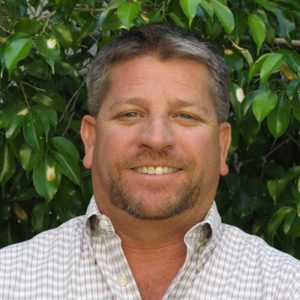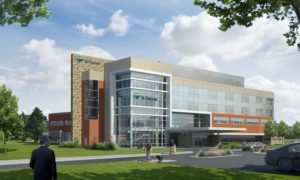 Originally published in Construction Superintendent on May 24, 2017. See original article here.
Originally published in Construction Superintendent on May 24, 2017. See original article here.
Mike King, ASHE, CHC, senior project superintendent, has invested three decades of his professional life at Kitchell Contractors where he’s managed some of the Southwest’s most iconic projects, including many of Arizona’s most high-profile healthcare projects. From Tucson to Flagstaff and around Greater Phoenix, King’s footprint can be found at a patient tower for Phoenix Children’s Hospital and at an emergency department tower at Banner – University Medical Center Tucson, as well as the Mercy Gilbert Medical Center. In Southern California, King managed the University of California San Diego Jacobs Medical Center in La Jolla. A veteran construction industry manager, King continues to bring his leadership and teamwork philosophy to life while mentoring the next generation of construction leaders. Here are highlights of Construction Superintendent’s discussion with King.
(Q) The majority of your experience is in the medical industry. How did you get involved with that specific industry?
It comes down to having great passion for what we do and bringing leadership to these challenging projects. Medical industry projects are also very rewarding to me, personally, because at the end of the day, healthcare is all about helping others.
(Q) Of the varied projects you’ve supervised, which ones do you consider the most interesting and why?
The Jacobs Medical Center at UC San Diego is intriguing because of the complexity of the project. Everything at Jacobs Medical Center was custom and it was a very high-profile and extremely challenging Integrated Project Delivery environment. On the UC Jacobs project, I was onsite from inception to completion. It remains one of the most challenging and successful projects I’ve had the pleasure to oversee.
(Q) In addition to the training you’ve received on OSHA, quality improvement, safety and emergency response, are there other learning opportunities that you’ve added to your portfolio?
Leadership training has been critical to our success. The Kitchell Leaders Program challenges and guides leaders through this process and gives us the tools to share our management skills and best practices with future leaders.
(Q) What is your go-to tech tool you use to get the job done?
The construction app, PlanGrid, is a fantastic tool that our superintendents love and rely on. I also utilize Building Information Modeling integrated with P6 scheduling software.
(Q) What is the best advice you’ve received throughout your work in the industry?
The best advice I’ve gotten is to stay humble, trust your people and avoid arrogance at all costs. I stay open-minded and manage with confidence at all times.
(Q) What techniques do you use to maintain good relations and communications with everyone involved in a project, including the public, when necessary?
I’m a big believer in one-on-one interaction and human interface. I rely heavily on an open communication philosophy and stay away from relying on email communications. With face-to-face interactions, nothing is lost in translation and expectations can be successfully managed.
(Q) What’s the craziest thing you’ve experienced on the job?
When building a hospital in rural Arizona, somehow cows got into the building and marked their territory in a surgical building addition.
(Q) How has the worker shortage affected your business and what types of strategies are you employing to combat the problem?
It’s a huge issue and challenges us to be creative and find solutions to stay on schedule. We are tackling the issue by utilizing prefabrication whenever possible with interior walls and framing segments of the build. We have also found success by splitting up trade partner contracts among other innovative approaches.
(Q) In your opinion, what is the most important quality a superintendent should possess?
Strong leadership. With that comes respect, honesty, guidance, open communication and open-mindedness.
(Q) Where can we find you when you’re not donning your hardhat?
I enjoy being on a boat in Mexico fishing for marlin and other sport fish. Like any good fisherman worth his salt, we always practice catch and release so future generations can enjoy the experience as well.

